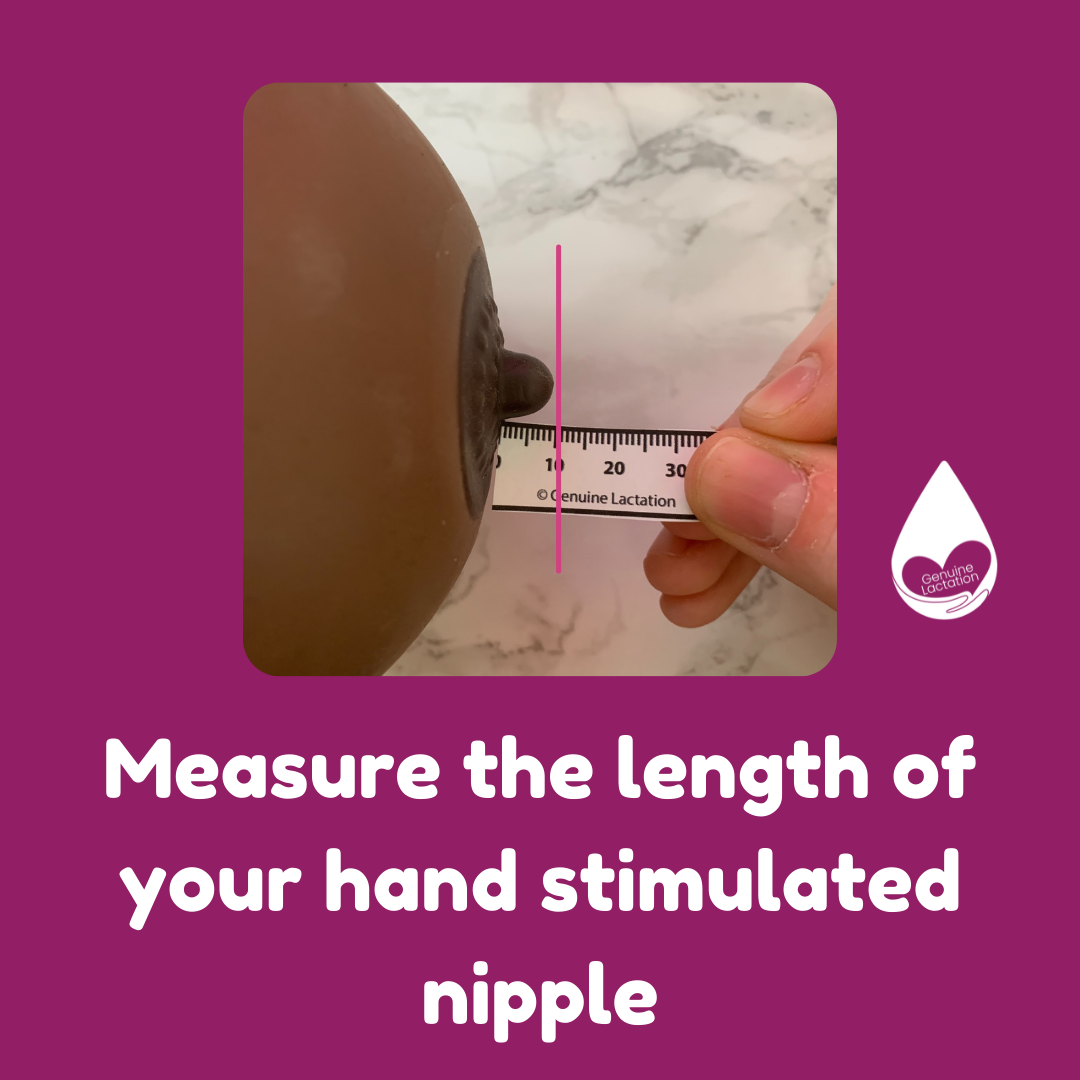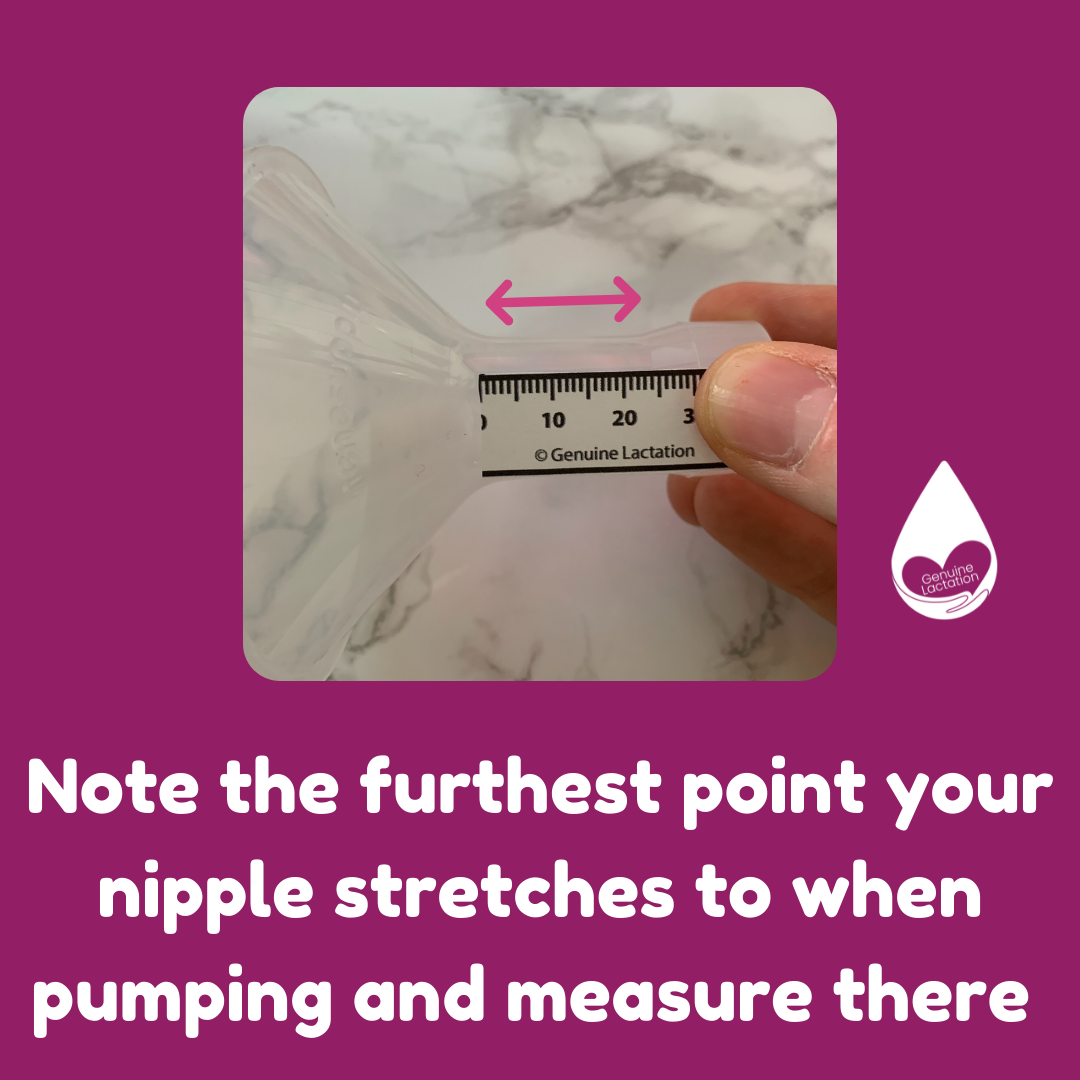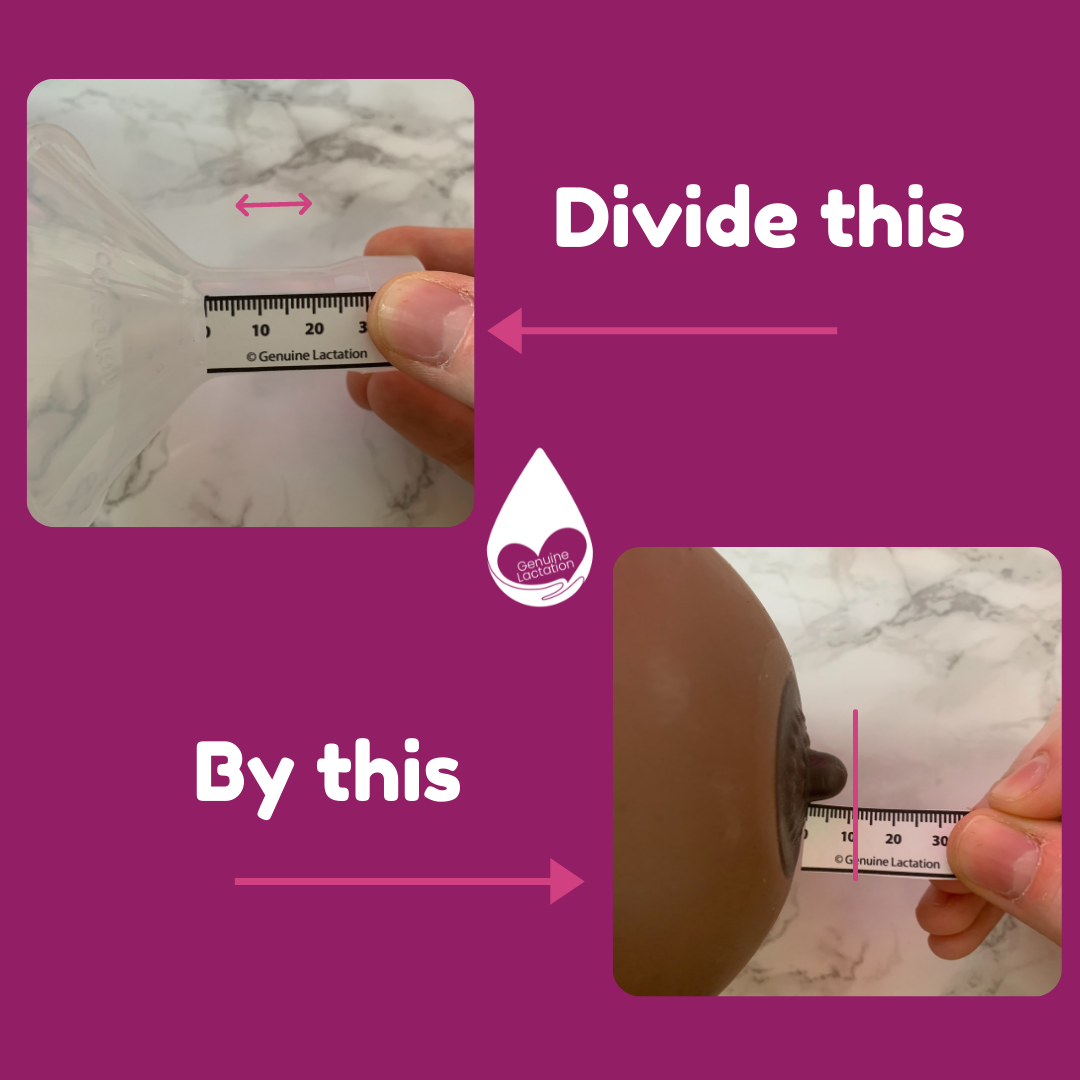How do I know if my Nipples are Truly Elastic?
How do I know if my nipples are elastic?
The concept of elastic nipples leaves many pumping parents with the burning question of, “Do I have elastic nipples?” The need to know is so overwhelming for some that they can’t even focus on all of the other aspects of pumping that they need to address to make pumping work for them.
Here is the rule to determine if your nipples have higher than average elasticity and would be considered elastic:
Do your nipples extend more than three times their resting length when pumping with a flange between 2-4 mm larger than your pre-pump nipple measurement?
So how do you measure that? Use the L-Shaped Nipple Ruler™ or access our On-Demand Flange Size Calculator Program.
1. Hand stimulate your nipples.
2. Measure the height and width of your nipple exactly (Use the largest number as the base nipple size).
3. Measure the length of your nipple shaft.
4. Add 2-4 mm to your base nipple size and pump with a flange within this range.
5. Measure how far the nipple stretches in the flange using the L-shaped Nipple Ruler™ to determine how far the nipple stretches.
6. Divide this number by the base nipple length.
Less than 2 equals less than average elasticity.
2-3 equals normal elasticity
More than 3 equals higher than average elasticity.
So why don’t we always check for this?
The honest answer, because it really rarely matters. In most cases, we have flanges that will either accommodate the stretch of your nipple, or we don’t. Even the most elastic nipple tissue may be just fine depending on the shape and material the flange is made out of. The only way we will truly know is to try the flange and see how your nipple tissue responds, and adjust accordingly if it’s not working well.
This is where professional support can make or break a pumping experience. If you are struggling, we need to consider size, shape, and elasticity of the nipple compared to size, shape, and length of the available flanges. It’s just not realistically possible to reduce that information to even a very long and in-depth blog post or webpage. It’s more complicated than that, but if you view and size hundred to thousands of nipples, you really do get good at making these adjustments.
So why are so many parents concerned they have elastic nipples?
I blame the flanges available in hospitals! The main brands of hospital grade multi-user pumps only go down to a 20/21. The Medela 21 mm flange is the most common one that parents seem to be given to try, and they are super short. An average length nipple that stretches even twice its normal length (which is the expected elasticity), will hit the back of these flanges. So, the parent gets sized up to a 24 mm, which is too big, but feels too tight as the tissue swells and stretches, so they get sized up again to a 27-28 mm or larger. Many nipples will swell to fill the size of even comically large flanges, so the topic of elasticity becomes something in the front of everyone’s mind.
Thankfully, we have lots of options that are likely to properly size you and accommodate even highly elastic nipple tissue! We just have to see how your nipple tissue is responding, and then, make an informed adjustment.
Learn more about elastic nipples and the options that may make pumping work better for you here!
If you are struggling to find the right flanges book a professional consultation today!







